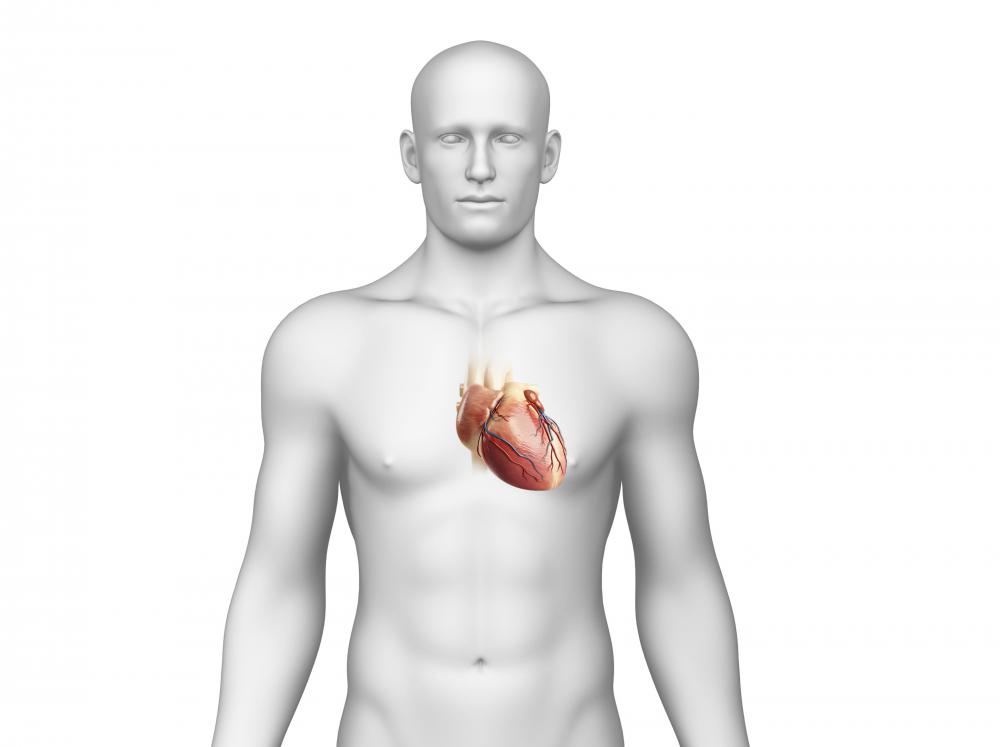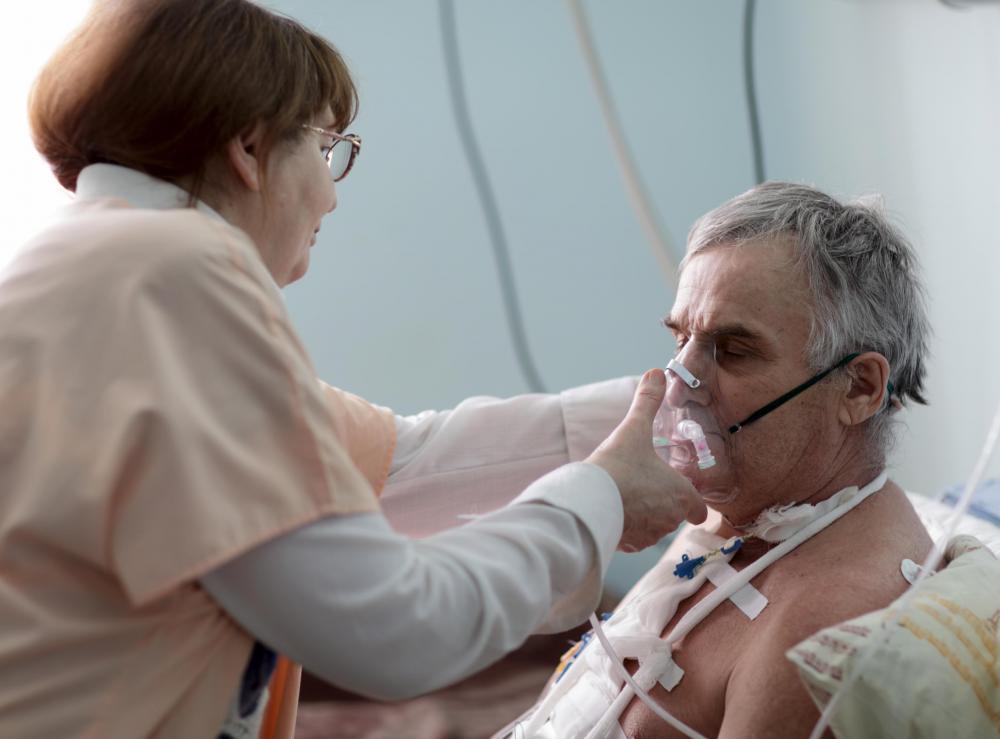At TheHealthBoard, we're committed to delivering accurate, trustworthy information. Our expert-authored content is rigorously fact-checked and sourced from credible authorities. Discover how we uphold the highest standards in providing you with reliable knowledge.
What is the Pulmonary Valve?
The pulmonary valve is an opening and closing valve located between the top of the right ventricle and the pulmonary artery. A normally functioning valve opens its three cusps or leaflets when the right ventricle contracts (systole), to allow blood to flow from the ventricle into the pulmonary artery. This blood then continues its pathway from the artery into the lungs where it is oxygenated. In between each heartbeat the cusps remained closed so blood from the pulmonary artery does not flow back into the right ventricle (regurgitation). All other valves in the heart, like the tricuspid, mitral, and aortic, are vital, and the pulmonary valve is not different in this respect.
Most people have a normal pulmonary valve, but there are a number of congenital heart diseases that may cause abnormal function and shape of this valve. One of the most common of these is pulmonary valve stenosis, where either directly at the valve or above or below it, the passageway is narrowed. This can make it difficult to get blood to the lungs result in lack of oxygenation for all tissues of the body.

Degree of stenosis dictates how much the body is affected. With insignificant narrowing the valve may still have plenty of room for blood passage. Over time, though, the valve could become leaky or cause some blood being sent forward to leak back into the heart. With severe regurgitation, enlargement of the right ventricle can occur or right heart failure might begin.

More serious pulmonary valve stenosis may be an immediate problem. If the body is unable to get adequate blood to the lungs, the condition may require emergency treatment, and things like valve replacement are considered. Sometimes a condition even more serious than stenosis is present at birth. In pulmonary atresia, the pulmonary valve is absent or blocked by tissue that allows for no blood flow. Like severe forms of stenosis, pulmonary atresia typically needs immediate treatment after birth. It should be noted that defects of the pulmonary valve are often seen in combination with other heart defects.

Sometimes diseases later in life affect valve function. These include infection with bacteria that can cause bacterial matter to grow in the heart valves. Bacterial endocarditis is one example of illness that may affect the pulmonic valve, and which was especially common before the advent of antibiotics. If people who had scarlet fever (strep throat) developed rheumatic fever, the condition damaged the valves over time, shortening lifespan.

Though not an issue for the majority of people, sometimes valves are so damaged or poorly formed that they require replacement. Aortic valves are often replaced with mechanical valves, but this is not the case for pulmonary valves. Ordinarily porcine allografts or human homografts are used instead. Unfortunately these wear out quickly, especially in children, so children with pulmonary valve problems might end up requiring valve replacements every five or so years, while growing. Adults requiring valve replacements may still need replacement of these every 10-15 years.
AS FEATURED ON:
AS FEATURED ON:















Discuss this Article
Post your comments